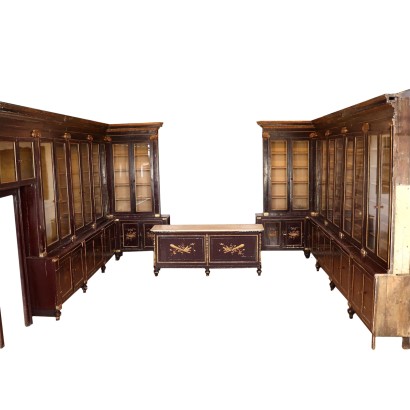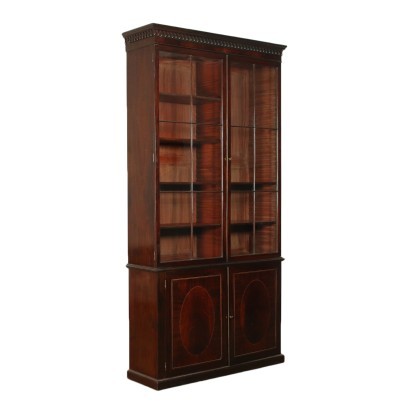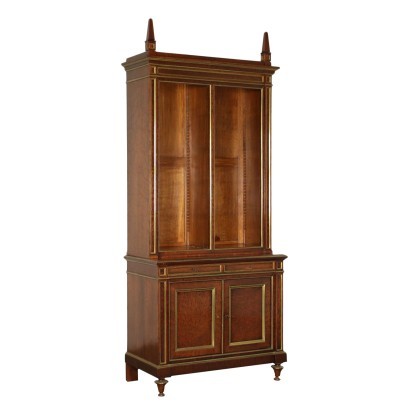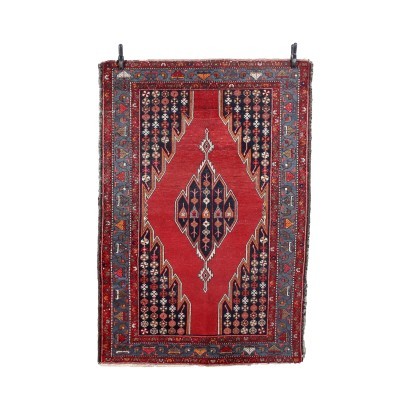Antique Drugstore Cabinet Chestnut Italy Early 1800s
Features
Style: Neo-Classical (1765-1790)
Age: 19th Century / 1801 - 1900
Origin: Orvieto, Umbria, Italy
Main essence: Chestnut
Description
An antique drugstore cabinet composed of two parts shaped like an L and a central counter. The lower part of the cupboards contains doors with decorated panel while the upper part is characterized by doors with glasses and pilaster strips with columns. On one side, there is an opening for a door, surmounted by a pair of small glass doors. The counter has a series of compartments and drawers on one side. Tailor-made, chestnut. The frame is molded with gilded indentation: the whole surface is lacquered purple with gilded capitals and frames. Decorated with garlands, gilded panoplies on the panels and the counter. It was painted anew in late 1800s and you can see the old green lacquer on some parts. White marble on the counter, the tops of the drugstore cabinet are made of fir and added in a following period. The original structure was thought to carry always marble tops. Manufactured in Orvieto, Italy, early 19th century.
Product Condition:
Fair condition. Wear consistent with age and use. Any damage or loss is displayed as completely as possible in the pictures.
Dimensions (cm):
Height: 316
Width: 676
Depth: 52
Maximum size (cm):
Width: 696
Certificate issued by: Enrico Sala
Additional Information
Style: Neo-Classical (1765-1790)
This historical period includes a first phase that can be properly defined as the Louis XVI style.nOnly at a later time, with the maturation of archaeological fashions, was a new vision of furnishing civilization formulated and codified, now fully attributable to the Neoclassical Style.
In fact, both trends coexisted in unison until the last years of the eighteenth century.
nIn the field of cabinet making, the Directoire, Retour d'Egypte, Consular and Empire styles also fall within the neoclassical era.
nFind out more about Neoclassicism with the insights from our blog...
n
































